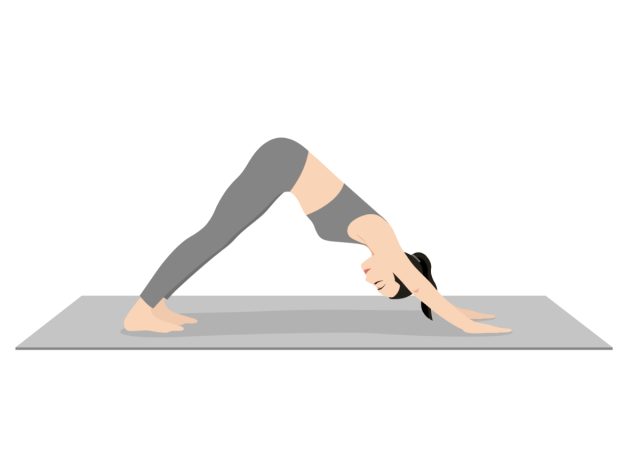
One of the most dangerous places to have a coronary blockage is in the left main coronary artery. Why is a blockage there so precarious?
To answer that, let’s start with some basic cardiac anatomy. The two major coronary arteries — the blood vessels that supply blood to the heart — are the left and right coronary arteries. The left main coronary artery (LMCA) is the very first portion of the left coronary artery. It provides oxygenated blood to most of the left ventricle, which is the main pumping chamber of the heart.
Any amount of blockage in the LMCA, such as from plaque buildup or a clot, is referred to as “LMCA disease.” However, treatment is only needed when there is a blockage of 50% or more. At that level, there is an increased risk of death, a major heart attack, or a life-threatening arrhythmia (irregular heartbeat). That’s why it needs to be treated quickly after a blockage is detected.
But what exactly is the best treatment of LMCA disease? This is the source of a lot of recent and ongoing controversy.
Treatment options for LMCA disease
Currently, there are three options for treating LMCA disease:
- Coronary artery bypass grafting, also known as bypass surgery or CABG, in which a blood vessel taken from a person’s leg, arm, or chest is moved and used to reroute blood around a clogged coronary artery.
- Percutaneous coronary intervention, also known as angioplasty and stenting. In this procedure, a catheter with a deflated balloon and stent (a wire mesh device) at the tip is threaded into the heart through a blood vessel in the leg or wrist. The balloon inflates along with the stent, clearing the blockage. The stent is left in place to prop open the blood vessel.
- Medical (drug) therapy.
Medical therapy is used in combination with both bypass surgery and stenting to help improve long-term outcomes. However, medical therapy alone has been shown to have worse outcomes in managing LMCA disease.
When comparing bypass surgery and stenting, there are some pros and cons to each. Stenting is much less invasive than bypass surgery, and has a significantly quicker recovery time. However, studies have shown that patients who have very complex LMCA disease (based on specific anatomic features) have better results with bypass surgery in the long term. But when there is less anatomic complexity, there is some uncertainty regarding which treatment is better.
READ RELATED: 400 people in UK diagnosed with preventable cancer every day, data shows
Recent studies: More data, but no clear answers
Two recent clinical studies (NOBLE and EXCEL) compared bypass surgery and stenting in the low and intermediate anatomic complexity groups, and found two different results.
Let’s start off with the NOBLE study, which compared stenting to bypass surgery with regard to the combination of death, heart attack, need for repeat stenting or bypass surgery, and stroke after five years in patients with LMCA disease. It found that stenting was worse than bypass surgery for this combination of outcomes. However, the difference was mainly due to stenting patients having a higher rate of heart attacks and needing repeat stenting or bypass surgery. There was no difference in death or stroke between the two groups.
The EXCEL study also compared patients who underwent stenting with those who underwent bypass surgery for LMCA disease, but looked at the combination of death, stroke, and heart attack after five years; unlike NOBLE, the main endpoint of this study did not include the need for repeat stenting or bypass surgery. This study found no difference between the two treatments for the main endpoint. The stenting group had a slightly higher rate of death, but it wasn’t due to cardiac causes. (There were slightly more patients in the stenting group who died from infection and cancer, which was felt to be unrelated to the procedure.) Similar to NOBLE, EXCEL also found that patients undergoing stenting had higher rates of needing bypass surgery or repeat stenting. There was no difference in stroke rates.
A recent meta-analysis (a study that pools together and analyzes many studies) found that bypass surgery and stenting were equal in terms of death, heart attacks, and stroke for the low- and intermediate-complexity groups. However, patients undergoing stenting required slightly more repeat stenting or bypass surgery afterwards.
Final takeaway
Ultimately, what are patients with LMCA disease to do? Based on the data, patients who have anatomically complex LMCA disease should undergo bypass surgery, if possible. In patients with low or intermediate anatomic complexity, shared decision-making between patients, cardiologists, and heart surgeons is required to determine the best treatment option for each individual patient.
Some patients may be too frail or may have medical conditions that prevent them from undergoing bypass surgery. Other patients may not want the longer recovery process associated with bypass surgery, and those patients could be considered for stenting. Otherwise, bypass surgery would be a very good option.
Follow me on Twitter @DrDarshanDoshi
Source: Havard Health









